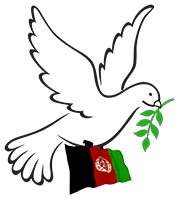Afghanistan Analysts Network
Once an oasis of underground reserves and natural springs, Kabul is now facing a steady and alarming decline in its groundwater. Yet the water crisis in Afghan cities is neither new nor limited to the capital. Urban water shortages have developed for multiple reasons. Climate change has altered the seasonal rhythms that once recharged aquifers, while rapidly growing urban populations have increased demand for water, outpacing the expansion of infrastructure. Most consequentially, the systematic mismanagement of the country’s water resources – including fragmented institutions, weak regulation and chronic underinvestment – has left cities without the necessary infrastructure to deliver safe and reliable water. Urbanisation has continued apace also without regard for safe sewage disposal, leading to the contamination of groundwater.
There is also a glaring disparity in the ability of Afghans to access water. While the urban poor have to buy their water from tankers – spending up to 30 per cent of their household income – the rich can continue to squander water without personal consequences. Ironically, it is those with the power to change policy who are least motivated, personally, to do so. For them, water is free and, if the water table falls, they can always ‘buy’ their way out of any shortage by digging their own private wells deeper.
Each of these stressors – climate change, urbanisation, mismanagement and the political economy of water – magnifies the others. The result is a emerging urban water crisis, one that is no longer limited to low-income neighbourhoods or informal settlements.
There are potential solutions and the report considers these – from managed aquifer recharge to institutional reform. As of now, however, with snowmelt dwindling and rainfall erratic, city populations still growing and institutions remaining fractured, access to safe water is slipping out of reach for many urban residents. The question is no longer whether Afghan cities are facing a water crisis, but can Afghanistan still avert a collapse of its urban water systems.
Edited by Kate Clark
* Mohammad Assem Mayar is a water resources management and climate change expert with a PhD in water resources management and environmental engineering from the University of Stuttgart in Germany. He is a former lecturer at Kabul Polytechnic University in Afghanistan and currently, an independent researcher based in Germany. He posts on X as @assemmayar1.
You can preview the report online and download it by clicking here or the download button below
Revisions:
This article was last updated on 17 Sep 2025
 Afghanistan Peace Campaign
Afghanistan Peace Campaign